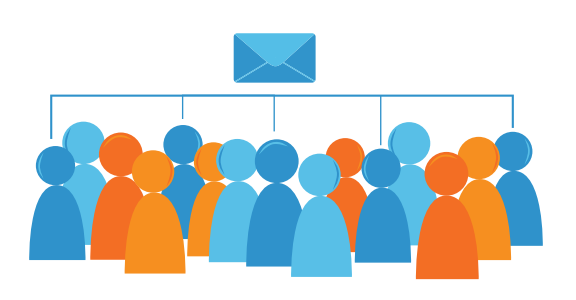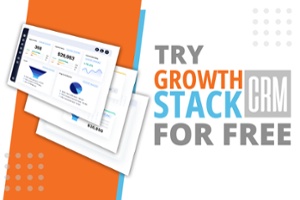8 Essential Steps to Successful Internet Marketing
This is part 6 of an 8 part series, The Eight Steps To Successful Internet Marketing. Here are the steps we've talked about already:
- Step 1: Create A Keyword Strategy
- Step 2: Optimize Your Website To Get Found
- Step 3: Create A Blog & Marketing Offers
- Step 4: Promote Content Through Social Media
- Step 5: Convert Traffic Into Leads

And now, let's talk about one of the most important pieces of a successful digital marketing strategy: marketing automation.
Marketing automation is one of the four crucial components of the Business GrowthStack (if you don't know what that is, just check out the marketing systems used by big-name brands like Target and Amazon). While marketing automation can include everything from suggested products on an e-commerce site to chat bots providing specific messages after a lead downloads an offer, it's most often used to create lead nurturing email series.
These series are highly targeted and designed to help your customers warm up to the idea of purchasing your product or service. They're also a heck of a lot more effective than hounding your leads with spam messages or letting them fall through the cracks.
So what makes lead nurturing email series so effective, and why should you invest time in making these emails? Read on to find out!
Nurturing Leads By Using Targeted Messages: Why It Matters & How To Do It Right
Here are some statistics to ponder:
-
A full 50 percent of leads are looking for what you have to offer but are not ready to become a paying customer.
-
Another survey, this time from Forrester Research, indicates that companies who have active lead nurturing plans gain 50 percent more highly-qualified leads at 1/3 less cost than other companies without a plan.
-
MarketingSherpa found that up to 65 percent of companies have not established a lead nurturing plan.
What does that add up to? A smart company needs to invest time and effort into developing a lead nurturing plan. This plan will boost qualified leads with a lower cost than the competition. All of this effort will put you well ahead of your less ready competition.
Lead nurturing involves building a relationship with your potential customer. You do this by sending targeted, relevant messages to your leads in a timely manner. The goal of this effort is to get them to convert from being a lead into a paying customer. It also lays the foundation for them becoming repeat customers.

The Concept of Lead Nurturing
Lead nurturing is a plan and a system you put into place to pre-qualify an early stage lead. Most Internet marketers use an automated series of email messages to do this.
Getting leads is fantastic. Not all leads are ready to become paying customers when they are visiting your site. In fact, anywhere from 75 to 95 percent of visitors are not ready to make a purchase. They are in research mode.
How much time does it take your sales funnel to move a lead from the first inquiry to becoming a paying customer? Does this time vary based on what product or service they ultimately buy? This is information that can help you in establishing working lead nurturing plans. You can create campaigns designed to maximize this marketing channel, to find quality leads, and to enhance your sales effort.
Best Practices for Email Marketing
Your lead nurturing plan should include a comprehensive email marketing plan. You need to look at the bigger picture besides nurturing leads through targeted email messages. You want to grow your email database, follow metrics closely, and use conversion best practices.
1. Build your email list
A major challenge for Internet marketers, both experienced and newcomers, is creating opt-in opportunities. These are the chances you offer to visitors to opt-in to receive your email messages.
You need to give them a reason to sign up to receive your emails. This all goes back to your marketing offers. You need to offer unique and interesting information in emails, like a newsletter or industry update. When you offer a form for them to sign up, offer clear reasons and benefits as to why they should do so.
Do not send emails unless someone has explicitly opted in. They should have to check a box that says they want to receive emails. Just adding an email without this explicit permission is inviting your emails to be seen as spam.
2. Send the Right Emails
Before sending emails, you need to keep one thing in mind. Leads respond better to personal messages not broadcast ones.
Each email needs to be relevant to the person receiving it. What offer brought them to you in the first place? How can you follow-up to nurture their interest and engage them further?
Here are some points to remember:
-
Use a real email sender name and add a personal signature. It can be the owner of the company or a sales person.
-
Personalize the message and remind them why they came to your site. "Thank you for subscribing to our newsletter" or "You recently downloaded the X white paper."
-
All messages should offer value to the recipient. What will that person get from your email content? Project that value in the subject line and the email body.
-
Avoid sending emails touting your company and its products. Keep the sales message subtle to be effective.
-
Do not rely on images. Some companies send out an image that has text instead of a text email with an image to enhance it. Use images as clickable content in the email, but your main message should be text.
- Be consistent in communications as this builds trust with customers. Pick a schedule and stick to it. Keep the same format and template for the email message.
3. Convert Email Followers into Customers
Make sure each email you send out has a clear purpose and a call-to-action. What do you want that person to do when they open your email? It might be to direct them to a landing page on your website. It could be to share an offer with friends and family over social media. It might be to download a new white paper or ebook on your website.
Even if someone is on your email list, that does not mean they are a qualified lead yet. You can send out an email asking them to go to a landing page. That landing page may offer special promotions or discounts. The landing page can take them further into the sales funnel and make them more likely to become a paying customer. When they sign up for this further offer, they are re-converting themselves into more qualified leads.
The landing page is part of your campaign. Your email messages and landing pages must be consistent in message, offer, and look. This will promote the visitor's trust in the offer.
4. Measure the Performance of Your Marketing Email
You can find many ways to measure your marketing emails. Some of the metrics include the rate of successful delivery, the rate messages are opened, the rate of unsubscription, click-through rate, list growth rate, email-forwarding rate, and many others.
Here are a couple of key metrics to follow:
Click-Through Rate (CTR) - This metric measures how many people you emailed actually clicked on the embedded links. This metric will give you an idea of how effective your marketing messages really are. You can try different offers, change email subject lines, create new CTAs, and tweak other parts of the email campaign and see the effect on the CTR.
Conversion Rate - This metric measures how many clicks-throughs actually turned into re-conversions on the landing page. How many people opt-in for the offer or product? This is the greatest measure of how well your email marketing actually does. The higher this rate is, the more relevant and compelling your offer is to your target audience. Your conversion rate depends also on your landing page and the effectiveness of your offer. Test different offers and different landing pages to find the ideal mix.

A couple of other metrics get a lot of attention, but do not offer a reliable picture of what is actually going on, specifically:
Open Rate - This metric shows how many people actually opened the email. Most email clients measure this by measuring how many individuals loaded the images that are part of the email. This is unreliable because many major email clients do not automatically load these images.
Unsubscribe Rate - This metric measures what percentage of recipients opted out of your email communication. This metric does not give a reliable measure of your email list health. You will have some people who do not unsubscribe, but who simply stop reading and opening your messages instead.
Some More Thoughts
This section offered a look at lead nurturing and email marketing. These are both essential components in a successful Internet marketing company. It allows you to engage your customers on an ongoing basis and to start pushing or leading those customers further down the sales funnel. This merges quite well with nurturing leads through social media and other platforms.
At this point, the next step is to think about behavior-driven communications. Those are the communications based on your lead's full history of interactions on and off your site.
Marketing automation is only one of four crucial components you need to get an ROI from your business's marketing. To learn the other three—and how to apply them to your business's marketing—pick up your copy of my book, The Golden Toilet. Available hard copy, Kindle, and on Audible!






